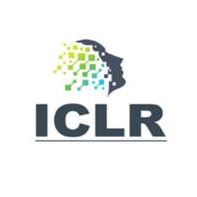
ICLR 2015 论文列表3rd International Conference on Learning Representations, ICLR 2015, San Diego, CA, USA, May 7-9, 2015, Workshop Track Proceedings. |
Self-informed neural network structure learning.
Efficient Exact Gradient Update for training Deep Networks with Very Large Sparse Targets.
Deep Networks With Large Output Spaces.
Visual Scene Representations: Scaling and Occlusion in Convolutional Architectures.
Visual Instance Retrieval with Deep Convolutional Networks.
Attention for Fine-Grained Categorization.
Generative Class-conditional Autoencoders.
Explorations on high dimensional landscapes.
Towards Deep Neural Network Architectures Robust to Adversarial Examples.
Denoising autoencoder with modulated lateral connections learns invariant representations of natural images.
Representation using the Weyl Transform.
What Do Deep CNNs Learn About Objects?
Fully Convolutional Multi-Class Multiple Instance Learning.
An Analysis of Unsupervised Pre-training in Light of Recent Advances.
Fast Label Embeddings for Extremely Large Output Spaces.
Ensemble of Generative and Discriminative Techniques for Sentiment Analysis of Movie Reviews.
Pixel-wise Deep Learning for Contour Detection.
Purine: A bi-graph based deep learning framework.
Predictive Encoding of Contextual Relationships for Perceptual Inference, Interpolation and Prediction.
Target Propagation.
Deep Gaze I: Boosting Saliency Prediction with Feature Maps Trained on ImageNet.
Gradual Training Method for Denoising Auto Encoders.
Flattened Convolutional Neural Networks for Feedforward Acceleration.
Entity-Augmented Distributional Semantics for Discourse Relations.
Classifier with Hierarchical Topographical Maps as Internal Representation.
Unsupervised Feature Learning from Temporal Data.
Compact Part-Based Image Representations: Extremal Competition and Overgeneralization.
Learning Compact Convolutional Neural Networks with Nested Dropout.
Variational Recurrent Auto-Encoders.
Incorporating Both Distributional and Relational Semantics in Word Representations.
Improving zero-shot learning by mitigating the hubness problem.
Theano-based Large-Scale Visual Recognition with Multiple GPUs.
Low precision arithmetic for deep learning.
N-gram-Based Low-Dimensional Representation for Document Classification.
Learning Deep Structured Models.
Restricted Boltzmann Machine for Classification with Hierarchical Correlated Prior.
Learning Activation Functions to Improve Deep Neural Networks.
Weakly Supervised Multi-Embeddings Learning of Acoustic Models.
Unsupervised Domain Adaptation with Feature Embeddings.
Permutohedral Lattice CNNs.
Example Selection For Dictionary Learning.
Deep learning with Elastic Averaging SGD.
Visual Scene Representations: Sufficiency, Minimality, Invariance and Deep Approximations.
Provable Methods for Training Neural Networks with Sparse Connectivity.
Random Forests Can Hash.
A Generative Model for Deep Convolutional Learning.
Parallel training of Deep Neural Networks with Natural Gradient and Parameter Averaging.
Score Function Features for Discriminative Learning.
Real-World Font Recognition Using Deep Network and Domain Adaptation.
Zhangyang Wang Jianchao Yang Hailin Jin Eli Shechtman Aseem Agarwala Jonathan Brandt Thomas S. Huang
Algorithmic Robustness for Semi-Supervised (ε, γ, τ)-Good Metric Learning.
In Search of the Real Inductive Bias: On the Role of Implicit Regularization in Deep Learning.
On the Importance of a Hierarchy for Learning Continuous Vector Representations of a Label Space.
Tailoring Word Embeddings for Bilexical Predictions: An Experimental Comparison.
Discovering Hidden Factors of Variation in Deep Networks.
NICE: Non-linear Independent Components Estimation.
Inducing Semantic Representation from Text by Jointly Predicting and Factorizing Relations.
Learning Longer Memory in Recurrent Neural Networks.
A Group Theoretic Perspective on Unsupervised Deep Learning.
Understanding Minimum Probability Flow for RBMs Under Various Kinds of Dynamics.
Deep metric learning using Triplet network.
Embedding Word Similarity with Neural Machine Translation.
On distinguishability criteria for estimating generative models.
Simple Image Description Generator via a Linear Phrase-Based Approach.
Audio Source Separation with Discriminative Scattering Networks.
On the Stability of Deep Networks.
Training Deep Neural Networks on Noisy Labels with Bootstrapping.
Learning linearly separable features for speech recognition using convolutional neural networks.
Striving for Simplicity: The All Convolutional Net.
Learning from Noisy Labels with Deep Neural Networks.
Representation Learning for cold-start recommendation.
Hot Swapping for Online Adaptation of Optimization Hyperparameters.
Diverse Embedding Neural Network Language Models.
Learning Non-deterministic Representations with Energy-based Ensembles.

